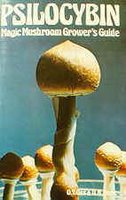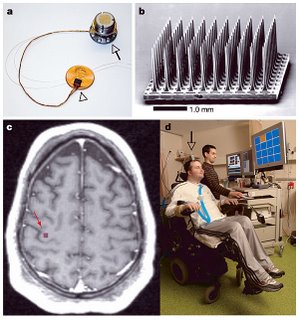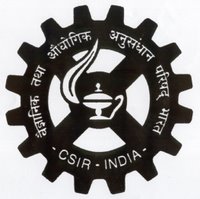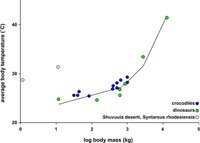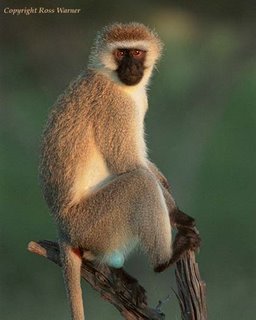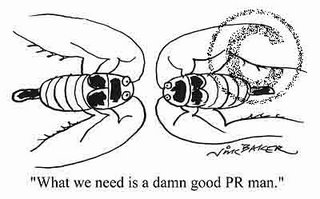I work with models
I work with models. I have to get close to them, get personal and intimate with them. That’s part of my job. Sometimes my boss asks me to go slow or else I might scare them away, so I spend a few hours each day touching them, playing with them, stroking them, letting them get used to my body and odors (I don’t smell btw, I smell like Old Spice). I have also given nicknames to them; they eat out of my hand, literally. I have complete control over them. I control their sleep cycle, feeding. I have them under my wand; they do what I tell them. Sometimes I get emotionally attached (I am human after all), but my job demands me to be a cool-detached-objective guy. And I do it. For the greater good of mankind. I am selfless. I use my models with a cold-blooded planning and clarity. I choose them according to their attributes, some for their eyes, some for their inability to put on weight, some for their bodies, some for their heart. After I get what I want with them, I dispose them, carefully with love and tenderness with the most stress-free method available to me.
I want to share some info and photos of the more exotic models with whom my colleagues around the world work with.
Armadillo Researchers have found that the core body temperature of the armadillo is low enough to favour the growth of the leprosy-causing bacterium Mycobacterium leprae. Using the armadillo, scientists have been able to develop a vaccine against leprosy, and one day these unusual South American mammals could help to provide a cure for the disease.
Researchers have found that the core body temperature of the armadillo is low enough to favour the growth of the leprosy-causing bacterium Mycobacterium leprae. Using the armadillo, scientists have been able to develop a vaccine against leprosy, and one day these unusual South American mammals could help to provide a cure for the disease.
Bee The natural products of bees, such as royal jelly, honey and even their venom, have been found to have significant effects in cancer treatment and prevention. The application of these products inhibited tumour growth and increased survival of the animals they were tested on. These results may lead to human clinical trials using royal jelly or honey, combined with chemotherapeutic agents
The natural products of bees, such as royal jelly, honey and even their venom, have been found to have significant effects in cancer treatment and prevention. The application of these products inhibited tumour growth and increased survival of the animals they were tested on. These results may lead to human clinical trials using royal jelly or honey, combined with chemotherapeutic agents
Hamster An interesting use of hamsters in medical research is the study of the neural basis of our internal daily (circadian) rhythms – in humans this controls our sleep-wake cycle over a 24h period. The control centre for these rhythms was found in the hypothalamus of the brain, and the use of hamsters clearly demonstrated the role of the hormone melatonin in this daily cycle
An interesting use of hamsters in medical research is the study of the neural basis of our internal daily (circadian) rhythms – in humans this controls our sleep-wake cycle over a 24h period. The control centre for these rhythms was found in the hypothalamus of the brain, and the use of hamsters clearly demonstrated the role of the hormone melatonin in this daily cycle
Jelly Fish
 These ocean creatures may have a painful and sometimes deadly sting, but they have proved to be very useful in scientific and medical research. Some researchers have used jellyfish to search for an effective anti-venom to save victims of Sea Wasp stings, whilst others are studying the chemicals in jellyfish for possible use in treating cancer. A bioluminescent chemical found in a type of jellyfish from the Pacific has already allowed doctors to trace the movement of specific chemicals through the body and could help reveal ways to inactivate defective genes, such as those in Huntington's disease.
These ocean creatures may have a painful and sometimes deadly sting, but they have proved to be very useful in scientific and medical research. Some researchers have used jellyfish to search for an effective anti-venom to save victims of Sea Wasp stings, whilst others are studying the chemicals in jellyfish for possible use in treating cancer. A bioluminescent chemical found in a type of jellyfish from the Pacific has already allowed doctors to trace the movement of specific chemicals through the body and could help reveal ways to inactivate defective genes, such as those in Huntington's disease.
Octopus The Animals (Scientific Procedures) Act 1986 regulates scientific procedures which may cause pain, suffering, distress or lasting harm to "protected animals"; it refers to these as "regulated procedures". Protected animals are defined in the Act as all living vertebrate animals, except man, as well as one invertebrate species, the common octopus. The octopus was added 12 years ago after extensive discussion concluded that its well developed nervous system may make it capable of feeling pain. However, no regulated procedures have been carried out using the octopus since its inclusion
The Animals (Scientific Procedures) Act 1986 regulates scientific procedures which may cause pain, suffering, distress or lasting harm to "protected animals"; it refers to these as "regulated procedures". Protected animals are defined in the Act as all living vertebrate animals, except man, as well as one invertebrate species, the common octopus. The octopus was added 12 years ago after extensive discussion concluded that its well developed nervous system may make it capable of feeling pain. However, no regulated procedures have been carried out using the octopus since its inclusion
Quail Research into head and facial development is an important use of quails. In one study, the embryos from both quails and ducks were used to implant neural crest cells (simple cells that arise very early in development) from one species into the other. The result was quails with duckbills or "duails", and ducks with quail beaks or "qucks". This suggests that head and facial diversification is due to neural crest cells, and further work should help to unravel the underlying causes of craniofacial defects, which are among the most common birth defects. Quails are also used to test the safety of agrochemicals in the environment.
Research into head and facial development is an important use of quails. In one study, the embryos from both quails and ducks were used to implant neural crest cells (simple cells that arise very early in development) from one species into the other. The result was quails with duckbills or "duails", and ducks with quail beaks or "qucks". This suggests that head and facial diversification is due to neural crest cells, and further work should help to unravel the underlying causes of craniofacial defects, which are among the most common birth defects. Quails are also used to test the safety of agrochemicals in the environment.
Tamarin Cotton-top tamarin monkeys have a high rate of spontaneous colon cancer. They develop colon cancer in a very similar way to humans, so investigations of whether colon cancer is heritable – as it can be in humans – are now a focus of research. Other monkeys used in research include macaques and marmosets, mostly in brain research and in safety testing of new medicines.
Cotton-top tamarin monkeys have a high rate of spontaneous colon cancer. They develop colon cancer in a very similar way to humans, so investigations of whether colon cancer is heritable – as it can be in humans – are now a focus of research. Other monkeys used in research include macaques and marmosets, mostly in brain research and in safety testing of new medicines.
Vole Voles are commonly used in studying social traits. A particular gene that produces a protein called vasopressin in their brains contributes to these behaviours. Adult male offspring with the long version of the gene have more of the protein in brain areas involved in social behaviour and parenting. These males tend to investigate female odours, greet strangers more readily and nurture their young. So variability in the length of the gene could help account for differences in normal human personality traits, such as shyness, and could perhaps influence conditions like autism and social anxiety disorders
Voles are commonly used in studying social traits. A particular gene that produces a protein called vasopressin in their brains contributes to these behaviours. Adult male offspring with the long version of the gene have more of the protein in brain areas involved in social behaviour and parenting. These males tend to investigate female odours, greet strangers more readily and nurture their young. So variability in the length of the gene could help account for differences in normal human personality traits, such as shyness, and could perhaps influence conditions like autism and social anxiety disorders
I stole all info from
http://www.rds-online.org.uk/pages/page.asp?i_PageID=2096&i_ToolbarID=2
…go there for a complete list.
 Back in the 60’s when Hendrix was setting fire to his amplifiers, people were really happy. Not just because he played some kick-ass rock and roll but they also had drugs, lots of it. Psychedelic drugs like mescaline (from cacti), LSD (synthetically produced) and psilocybin (from mushrooms) were freely used. Then the government had to clamp them down, they just can’t stand any part of the society have some fun. (Actually these happy unemployed music lovers with drug induced world view started turning in large numbers to anti-war rallies). Unfortunately this also meant an end to research on these substances which were regarded as a promising candidate for treating chronic pain and depression in terminally ill patients.
Back in the 60’s when Hendrix was setting fire to his amplifiers, people were really happy. Not just because he played some kick-ass rock and roll but they also had drugs, lots of it. Psychedelic drugs like mescaline (from cacti), LSD (synthetically produced) and psilocybin (from mushrooms) were freely used. Then the government had to clamp them down, they just can’t stand any part of the society have some fun. (Actually these happy unemployed music lovers with drug induced world view started turning in large numbers to anti-war rallies). Unfortunately this also meant an end to research on these substances which were regarded as a promising candidate for treating chronic pain and depression in terminally ill patients.